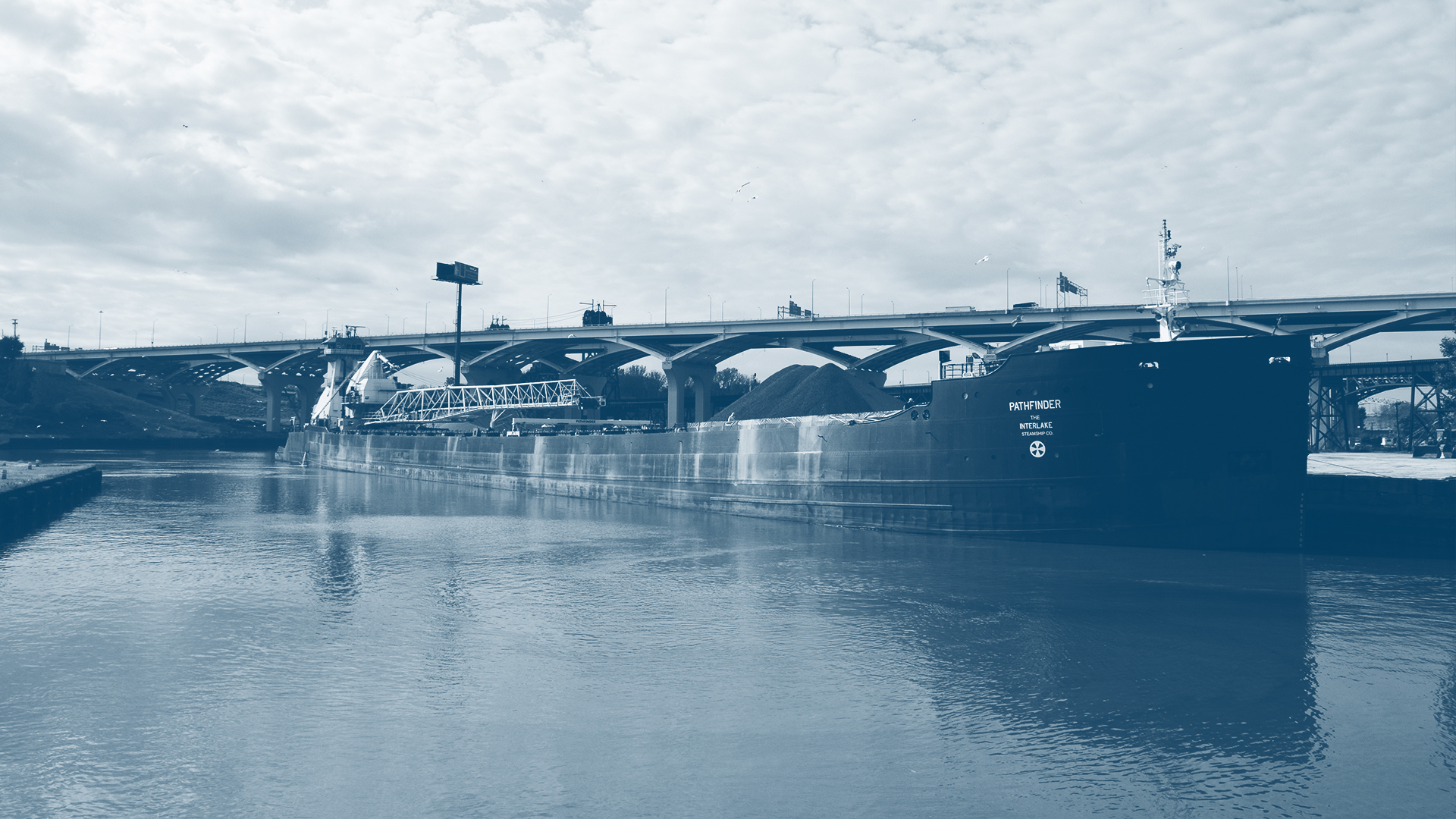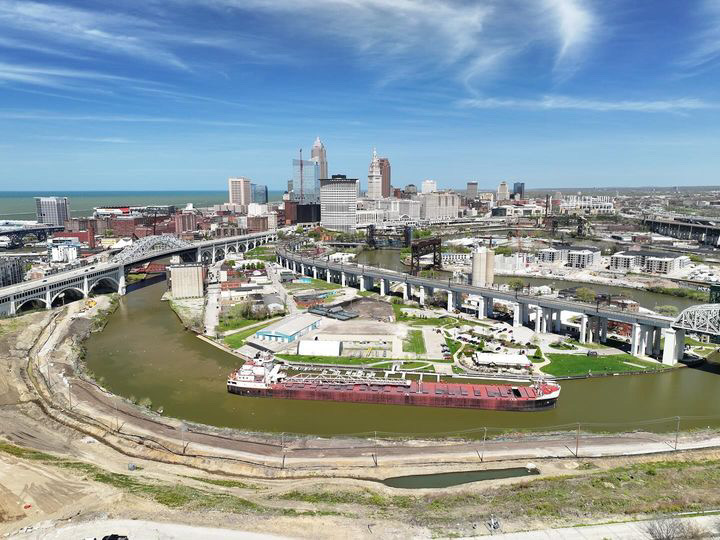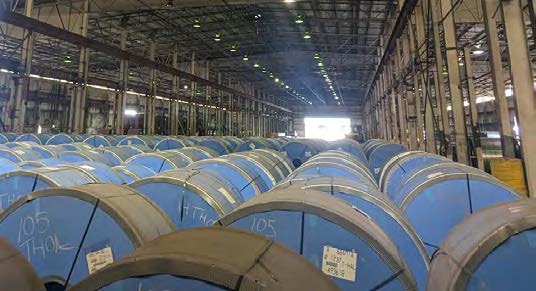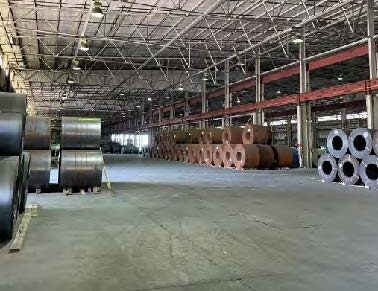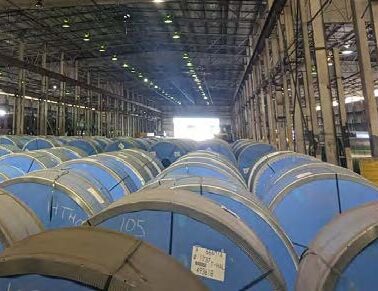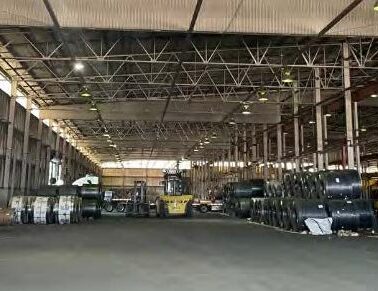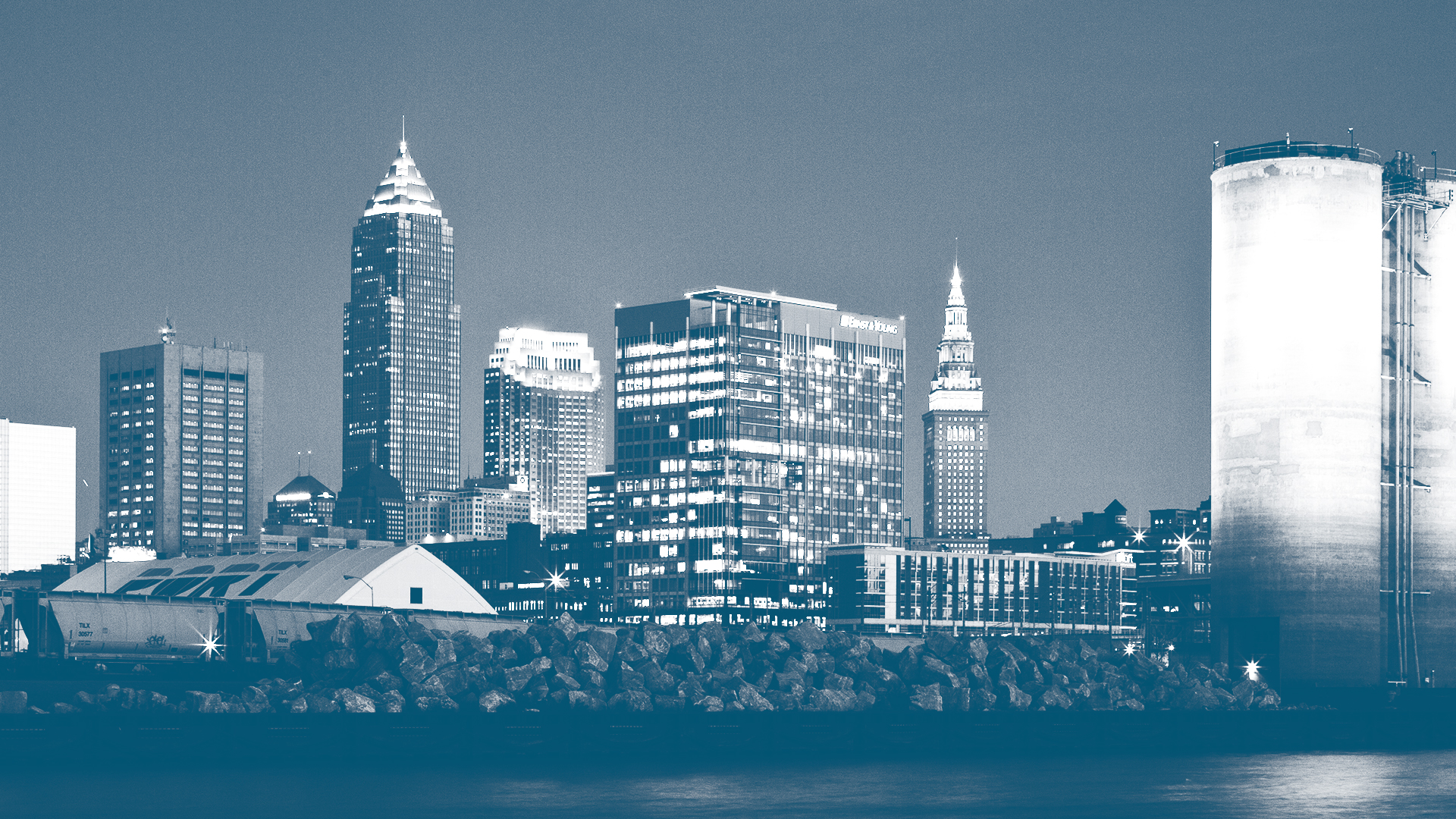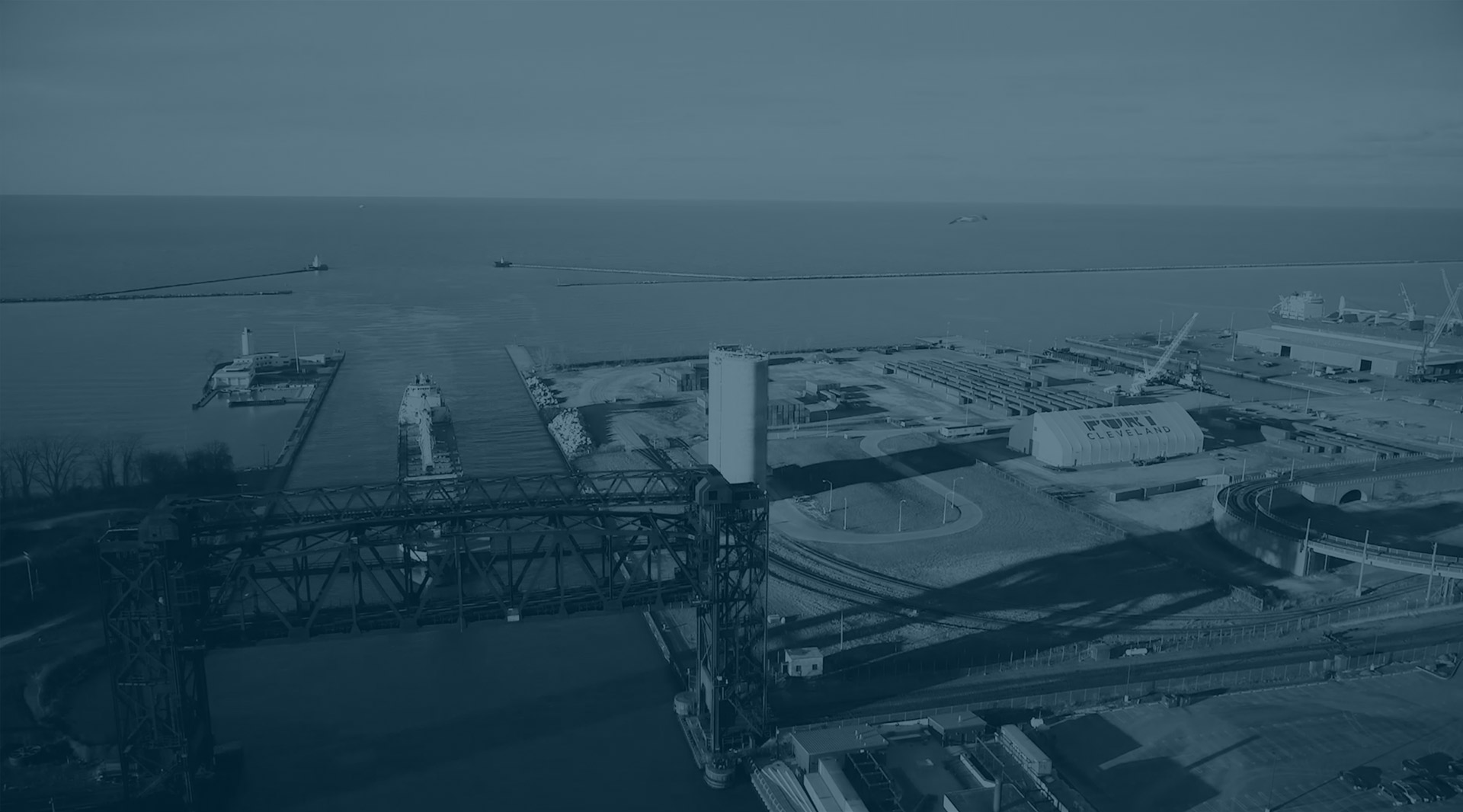Articles
Inner-city and suburban development projects get $70.2 million in boosts from Port
Inner-city and suburban development projects get $70.2 million in boosts from Port
The Port’s development finance team is issuing up to $70.2 million in bonds for several new construction and redevelopment projects. Those include:
- $32 million in tax-exempt, multifamily housing revenue bonds for an extensive renovation of the 191 unit Gates Mills Villa Apartment Building in Mayfield Heights. The $48 million project includes modernization of all units, significant upgrades to common spaces, mechanical repairs and replacements, new free WIFI, new windows, new roofs, landscaping and other site improvements. The property serves elderly tenants, age 62 and older, and 167 of the 191 units are under Section 8 contracts.
- $15 million in bonds for the development of a new residential project and rehabilitation of a historic building into residential in Ohio City. The $19.8 million Franklin Yard project, located at the corner of Franklin Boulevard and West 32nd street, will include construction of a modern new three-story apartment building with 29 units and restoration of a former YWCA women’s residence and a mid-19 century mansion that will create an additional 38 units.
- $15 million in lease revenue bonds for the 46 two and three bedroom affordable housing apartments and 8 two-bedroom market rate units to be known as the Gordon Crossing Project in Cleveland’s Hough neighborhood. The new $17.1 million project is expected to begin construction in Q2 2024. Woda Cooper Development Inc. and Frontline Development Group LLC are partnering on the project. Woda Cooper operates more than 350 properties with 16,000 housing units in 16 states. Frontline Development Group, LLC is a female led, minority owned real estate development company based in Cleveland, Ohio. Frontline develops real estate projects that are committed to innovative economic development and partners at each step of the development to grow the balance sheets of economically and socially underutilized businesses.
- $8.2 million of taxable bonds for construction of a cargo and aircraft storage hangar, cargo terminal, pass-through passenger terminal and vehicle parking spaces for Jets FBO at Cleveland Hopkins International Airport. The total project is planned to cost $12.6 million. Jets FBO and its subsidiary provide Ohio airports with fixed base operator aircraft services, including aircraft storage, fuel sales and de-icing.
Port authorities in Ohio can offer an array of benefits in the real estate and economic development space. Since 1993, the Port of Cleveland has provided more than $5 billion to more than 160 projects in Cuyahoga County and beyond.
Port seeks nearly $95 million U.S. EPA grant to advance environmental programs
Port seeks nearly $95 million U.S. EPA grant to advance environmental programs
The Port of Cleveland has already proven to be an environmental leader by being the first port on the Great Lakes with a Climate Action Plan. They are now hoping to take that to the next level by pursuing a nearly $95 million U.S. Environmental Protection Agency grant that will help make it one of the most sustainable maritime shipping operations on the Great Lakes. The grant is part of the $3 billion EPA Clean Ports Program, which is designed to fund sustainable infrastructure and electric equipment at U.S. Ports.
Carly Beck, the Port’s senior manager of planning, environment and information systems, said this is the largest grant application the Port has ever submitted. “The EPA is looking for really large and robust ideas and have set a minimum project ask of $10 million,’’ she said. “These grants are to cover 90 percent of costs and only require a 10 percent match.”
The Port’s application proposes a public-private partnership with Logistec USA Inc. – the general cargo and bulk terminal operator – and Great Lakes Towing – the owner and operator of the tugboats that service the Port. The grant funds would be used for warehouse rooftop solar and associated battery energy storage systems, electric cargo handling equipment, shore power for vessels to plug in while at berth, and the construction of two new electric tugboats.
The grant program, if fully funded, would reduce the Port’s maritime CO2 emissions by roughly 40%.
A decision on the grant awards is expected in September.
Seasonal dredging essential for maritime industry
Seasonal dredging essential for maritime industry
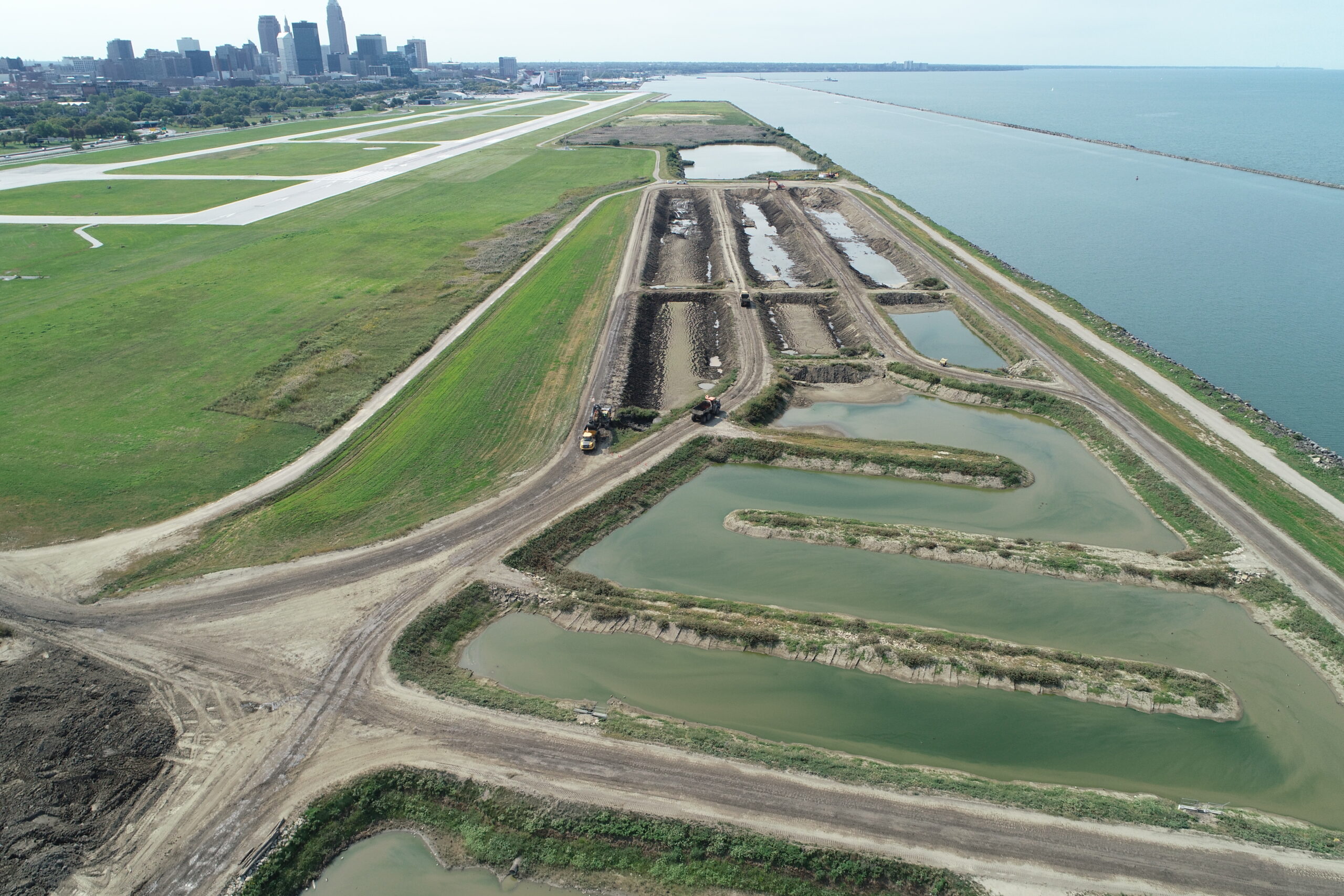
Dredging is critical for maintaining Cuyahoga River and harbor shipping, and therefore crucial for our regional economy. The Spring dredge cycle is currently being handled by U.S. Army Corps of Engineers (USACE) contractors, DMYLES Inc. and Ryba Marine Construction Co. They have wrapped up the hydraulic placement of approximately 50,000 cubic yards of material from the federal navigation channel into the Port’s Sediment Processing & Management Facility (SPMF) to the northeast of Burke Lakefront Airport. This material is being dewatered and will be sampled and excavated for beneficial use. The remaining 150,000 cubic yards of material to be dredged this spring will be placed into the Port’s silt basin at the SPMF for permanent storage. An additional 20,000 cubic yards of material from Cleveland-Cliffs’ docks was also placed onsite under a separate contract.
Beneficial uses of sediment include use in construction aggregate, general purpose backfill, brownfield reclamation, and blended topsoil and landscape applications. A major future use will be to create CHEERS, short for the Cleveland Harbor Eastern Embayment Resilience Strategy, a collaborative effort with multiple partners to create more than 100 acres of parkland north and east of the East 55th Street Marina.
Preparations started for Irishtown Bend bulkhead construction
Preparations started for Irishtown Bend bulkhead construction
The first phase of soil removal is nearly done at the Irishtown Bend Stabilization and Rehabilitation Project, and preparations have started for bulkhead construction. Relocation of utilities is continuing.
Upcoming activities include:
- Completing the installation and testing of cables in the Cleveland Public Power underground electrical duct bank tunnel to support removal of the current Riverbed Street overhead electrical lines.
- Completing installation and testing of the relocated 16” Cleveland Water Department line on Franklin Ave.
- Completing construction of the Franklin Avenue re-alignment grade to serve as a temporary construction access road to the site and allow for removing the existing Franklin Avenue and completing phase one of excavation.
- Resubmitting bulkhead drawings for engineering approval.
- Dredging along the face of the proposed bulkhead.
To project webcams have been installed across the river from the site to provide 24/7 viewing of site activities.
More than $32+ million for cutting-edge upgrades paving the way for Port modernization and sustainability
More than $32+ million for cutting-edge upgrades paving the way for Port modernization and sustainability
The Port is leveraging $32+ million in state and federal grants to overhaul of a key warehouse and electrical infrastructure at the General Cargo Terminal. This strategic move will ensure ongoing efficiency of Port facilities and prepare the Port for upcoming electrification efforts.
William Friedman, Port president and CEO, said the investments were critical to successful port operations as well as sustainability.
The undertaking is part of a broader investment of $93.8 million in Port infrastructure since 2015, with more than 75% of it covered by state and federal grants. Aligned with the Port’s recently implemented Climate Action Plan, the overarching goal is to achieve net-zero greenhouse gas emissions by 2050, making Cleveland the first Great Lakes port to adopt such an ambitious plan.
Learn more details about the grants and the plan.
Port continues to finance transformational residential projects in Northeast Ohio
Port continues to finance transformational residential projects in Northeast Ohio

The Port of Cleveland’s development finance team is busy collaborating with developers and other ports to provide unique, competitive financing that most recently was used to help make possible a new Cleveland rental housing development and a mixed-use project that could help revitalize downtown Painesville:
• The Port is issuing up to $15 million in bonds for the $19.8 million Franklin Yard project. Located at the corner of Franklin Boulevard and West 32nd Street in Cleveland’s Ohio City neighborhood, it will include construction of a modern new three-story apartment building with 29 units and restoration of two nearby historic buildings that will create an additional 38 units.
• The $10.5 million 89th Rising Housing Development is the first modern market rate rental development in the central part of Cleveland’s Fairfax neighborhood. The development is planned by a company founded by Timothy L. Tramble Sr., president of We Rise Development, a resident of the Fairfax neighborhood and president and CEO of the Saint Luke’s Foundation. With the Port’s approval of up to $6 million in bonds, the initiative is poised to address vacancy and blight. The first phase will include 48 one- and two-bedroom rental units in six large structures designed to give the appearance of the Victorian houses that once anchored the street. Learn More
• The $33 million+ Grand River Walk is envisioned as a vibrant, mixed-use complex with 120 residential units, retail space and covered parking. The Port is committed to issuing up to $6 million in bonds for the project through their A- rated bond fund under a Cooperative Agreement with the Lake County Port Authority. Learn More
Beyond their maritime origins, port authorities have evolved into catalysts for comprehensive economic development, offering an array of benefits including speed of closing, confidentiality, off-balance sheet financing, sales tax exemption and flexible, competitive financing products.
Port a leader in economic development with financial support for job creation projects
The Port has provided more than $5 billion for 164 projects dating back to 1993, the majority of those within the City of Cleveland. Recent projects funded include:
- $32 million in bond financing for Roundstone Insurance’s new headquarters in Rocky River. This move aims to accommodate the company’s growth and attract local talent, with plans for a three-story building that can house 140 employees and potentially 100 more over the next five years.
- The Port is partnering with the Canton Hall of Fame Village (HOFV) Resort & Entertainment Company to refinance the former McKinley Grand Hotel, now a DoubleTree Hotel. This restructuring of the capital stack and refi is expected to save HOFV more than $5 million. The bonds will be repaid through Tourism and Development District taxes collected at the hotel.
- The Port provided $8 million in TIF bond fund financing for the renovation of the historic downtown Cleveland Renaissance hotel, which will be rebranded into The Cleveland Hotel when completed. The Port partnered with the Development Finance Authority of Summit County which also provided bond fund financing for the project.
Cleveland-Europe Express Increases Capacity
What is the Cleveland-Europe Express?
The Cleveland-Europe Express (CEE) was started in 2014 by the Port of Cleveland. It was the first and only Great Lakes container service.
What is new with the Cleveland-Europe Express?
The Port of Cleveland has responded to global supply chain problems by expanding the Cleveland-Europe Express service with a container-only vessel to the currently scheduled multi-purpose vessels. This expansion will begin in early September 2021.
What is currently being moved through the CEE?
When the Cleveland-Europe Express launched, we used multi-purpose vessels equipped to manage both non-containerized cargo and containerized cargo.
The global market now dictates the need for a solution to container shipments being delayed. This issue led to the Port of Cleveland acquiring an 860 twenty-foot equivalent unit (TEU) capacity vessel that handles only containers. This will allow for more access to the Midwest markets and broadens the scope of the Port’s capabilities.
What is the benefit of acquiring an 860 TEU capacity vessel?
The benefit is it will add to our already existing fleet that is a part of the CEE. The other vessels are multi-purpose and, they will continue to bring in a variety of goods, while the 860 will only carry large amounts of containers. The Port expects business to grow by 30 to 50%. This third call added to the previous two allows more opportunity for shippers to push more supplies monthly.
Why is the container service and expansion of the Cleveland-Europe Express so critical right now?
First, the current global supply chain issues that existed before the COVID-19 pandemic have now been amplified. The shortage of containers on the market has led to increased prices for cargo owners to move their goods around the globe.
The Cleveland-Europe Express service is at the forefront of the Great Lakes economy. The container-only vessel gives shippers and cargo owners in the Midwest region (Ohio, Indiana, Michigan, Kentucky, and Illinois) the opportunity to move their cargo as close to their final destinations as possible.
From an export standpoint, the CEE allows cargo owners in the Midwest to use a port local in the Great Lakes. This allows them to move their goods through our port to the global economy, whether it be Europe, Asia, South America, Africa, etc. That is what the goal of the service is.
How efficiently can these cargoes move in and out of the Port of Cleveland for import and export?
Throughout 2020, the Port of Cleveland expanded our main gate, added TWIC card and plate reading technology, and reconfigured entry and exit lanes, resulting in reduced wait time for trucking companies and truck drivers.
At the forefront of every decision is ensuring a seamless process and elimination of congestion that you find at large coastal ports. If you are a shipper in the Midwest, you can get that cargo to us two to three days in advance. It will hit that sailing schedule and move out through the St. Lawrence Seaway and arrive at the Port of Antwerp in 14 to 15 days.
If I am a shipper, why would I use the Port of Cleveland?
Right now, shippers are facing a multitude of challenges and frustrations in their day-to-day business; with the biggest issue being congestion at ports. Utilize the Port of Cleveland and your goods are moved taken care of in a much more efficient manner without congestion on the docks. The Port of Cleveland can get your goods into your consumer’s hands faster than if you were to go through large coastal ports.
What do you see as next for the Port of Cleveland and the Great Lakes maritime industry in general?
We want to eventually grow our container service into a weekly service to give customers even more opportunities to move containerized cargo in and out of our facility.
Ports on the Great Lakes are working hard to diversify our cargo base, and the Port of Cleveland is no exception. In the next couple of years, you may see us get into other cargo such as bulk liquid.
Request a Quote
Case Study - INTRO Cleveland
INTRO Cleveland
Behind America's Tallest Mass Timber Building
INTRO Cleveland is a mixed-use development located in the heart of Ohio City. Adjacent to the historic West Side Market, one of Cleveland’s largest tourist destinations, INTRO Cleveland consists of nine stories in total. The development’s first floor consists of 35,000 square feet of downstairs retail, the ensuing floors up to the eighth are used for residential and, lastly, the top, ninth floor combines a mix of residential space as well as approximately 12,000 square feet of event space.
The Port of Cleveland worked closely with Harbor Bay Real Estate Advisors to develop custom solutions to import mass timber directly to Cleveland and also leveraged the Port’s financing capabilities to help fund the project.
Watch the Video
How to Ship to the Great Lakes
MOVING CARGOS ACROSS THE ATLANTIC OCEAN TO AMERICA’S HEARTLAND
From the earliest days of settlement in America, the Great Lakes and St. Lawrence River have been used to move cargos from America’s Heartland to the world — and vice versa.
In fact, the origin of Great Lakes shipping began in the 1800s with the industrialization of the Midwest. When farmers, miners and loggers of the region needed to move their goods, they turned to Great Lakes fleets to serve their industries. In turn, this helped develop thriving port cities in America, like Cleveland.
In present day, ports located in the Great Lakes region, like the Port of Cleveland, handle cargos from across the world, supporting major industries that are critical to the global economy, such as agriculture, automotive, construction and energy.
For businesses across the globe, the same advantages that existed at the genesis of Great Lakes and St. Lawrence River shipping exist today.
Ultimately, a faster door-to-door transit, ample capacity and direct access to a market containing half of all U.S. households and manufacturing means that products reach their final destination before the competition.
So, how does shipping to the Port of Cleveland actually work?
Shipping to the Port of Cleveland from anywhere in the world is simple. In fact, it’s so simple we can break it down to three easy steps.
As an example, let’s track a shipment that originates in Europe, specifically in Antwerp, Belgium.
Step 1: Containerized or non-containerized cargo is loaded on a vessel
Cargos are loaded on a vessel and prepared for shipping. These vessels, like The Spliethoff Group’s — our vessel partner for the Cleveland Europe Express, can carry more than 70,000 tons of cargo in a single voyage. Just for comparison, it would take 2,800 trucks to do the same exact work of one vessel.

In addition to simplifying the supply chain by using water transport, the size of these vessels also offers economic and environmental benefits by saving on fuel costs and, more importantly, releasing fewer emissions along the way.
Step 2: The vessel crosses the Atlantic Ocean and arrives at the Port of Cleveland
The map above shows a typical shipping route from a city in Europe, like Antwerp, to Cleveland in America.

Once the vessel leaves the port of origin, it takes an all-water route across the Atlantic Ocean and through the Great Lakes-St. Lawrence Seaway system until it arrives at the first major U.S. port of call, the Port of Cleveland. In total, the trip between Cleveland and Antwerp has an average sailing time of 13 days.
When you compare the timing of the same trip from Europe to other ports, like those on the east coast, you’ll find that shipping to the Port of Cleveland is actually 5-10 days faster. That means getting products in front of customers ahead of the competition.
Curious why it’s so much faster? It comes down to added efficiencies and capacities.
When cargo arrives at the Port of Cleveland, our terminal operator, LOGISTEC, handles the shipment, which can include bulk and general cargo such as breakbulk, intermodal containers and project cargo.
Ultimately, this partnership reduces the amount of time cargos are stuck sitting at a port, speeding up the shipping process from origin to end-user.
Just how much faster does this make shipping to the Port of Cleveland? Actually, a lot.
The span of time a vessel unloads at the Port of Cleveland is minimal, typically just over two days. Compare the same process at other ports, like U.S. east coast, and you’ll find that the Port of Cleveland unloads cargo about three to five days faster.
Simply put, while other ports have vessels sit at the dock with your cargo, we keep it moving to its final destination.
Step 3: Your cargo is connected to its final destination
Once the cargo is moved from water to land, it’s connected to the final user. The Port of Cleveland’s geographical location offers direct access to its hinterlands (shown below) — major U.S. markets in Ohio, Pennsylvania and Michigan (i.e., Cleveland, Columbus, Detroit and Pittsburgh) — all within just one day of trucking.

Why is the Port’s geographic location so important to businesses? Half of all U.S. households, businesses and manufacturing plants are located within an 8-hour drive of the port. That means access to prime markets faster and more efficiently.
To connect your cargo, the Port of Cleveland has strong, locally established multimodal solutions, including an intermodal network of railroads and inland ramps or terminals where containers can be drayed, two Class 1 Railroads, CSX and Norfolk Southern. OmniTRAX, a national short-line railroad, provides all switching services on port property, and immediate highway access for truck routing and drayage.
Are you ready to ship to the Great Lakes?
Work with the Port of Cleveland — the premier port on the Great Lakes. We’re your business’s one-stop for shipping, logistics, capacity and access solutions.
Contact us today at 216.241.8004 or learn more on our website.

